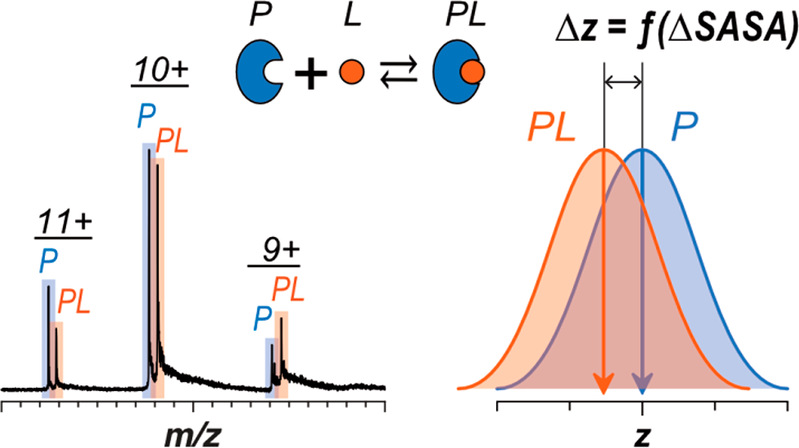Abstract
Native electrospray ionization mass spectrometry(ESI-MS) is nowadays widely used for the direct and
sensitive determination of protein complex stoichiometry andbinding affinity constants (Ka). A common yet poorly understood phenomenon in native ESI-MS is the difference between the charge-state distributions (CSDs) of the bound protein−ligand complex (PL) and unbound protein (P) signals.This phenomenon is typically attributed to experimental artifacts such as nonspecific binding or in-source dissociation and is considered highly undesirable, because the determined Ka values display strong variation with charge state. This situation raises serious concerns regarding the reliability of ESI-MS for the analysis of protein complexes. Here we demonstrate that,contrary to the common belief, the CSD difference between P and PL ions can occur without any loss of complex integrity,simply due to a change in the solvent-accessible surface area (ΔSASA) of the protein upon ligand binding in solution. The experimental CSD shifts for PL and P ions in ESI-MS are explained in relation to the magnitude of ΔSASA for diverse protein−ligand systems using a simple model based on the charged residue mechanism. Our analysis shows that the revealed ΔSASA factor should be considered rather general and be given attention for the correct spectral interpretation of protein complexes.

